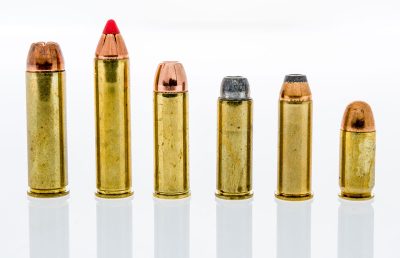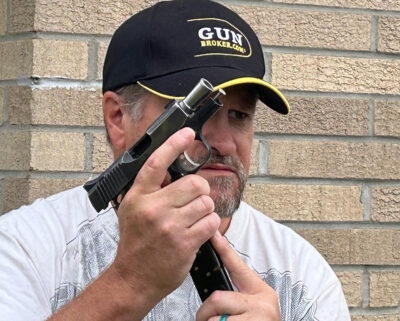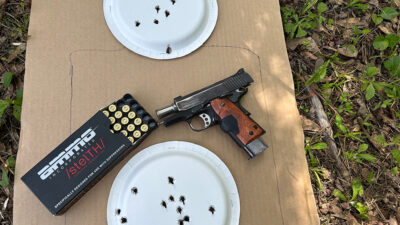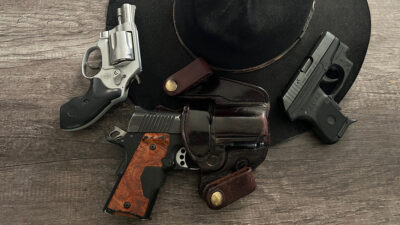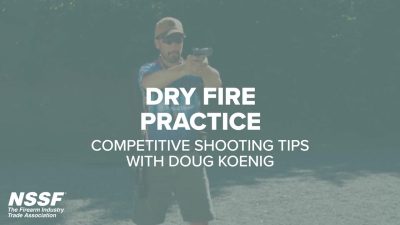Stoppage Drill: Keeping Guns Running in a Fight

By Paul Rackley, GunBroker Editor
When you pull the trigger, a handgun is supposed to go bang, each time, every time. This is why shooters are so stringent about firearms safety. However, sometimes pistols don’t go bang. The two main reasons why a semi-auto doesn’t fire are called malfunctions and stoppages. On the range, either can be irritating. During an attack, they can get you killed.
A malfunction is when something breaks on the gun. If this happens, you’ve got a paperweight or a club. You had better swing it, run or get your hands on another gun. In most cases, though, the reason a pistol does not fire is because of a stoppage, rather than a malfunction or breakage.
Stoppages happen when something jams up and causes the gun to stop firing. These can be caused by a variety of issues, including magazines, ammunition, maintenance and even handling. Thankfully, shooters can learn to work around jams via the stoppage drill.
Types of Stoppages
There are three main types of stoppages or jams — failure to feed, failure to eject and failure to go into battery. All three can be overcome by staying calm and performing simple procedures, from behind cover if possible. Two, in fact, are remedied via the same simple procedure, the Tap & Rack.
A failure to feed happens when the slide fails to pick up a round from the magazine. It can because the magazine isn’t fully seated, the round is canted or the round is a dud. Regardless of why, the method of getting the gun back running is the same, the Tap & Rack.
Also known as the Tap, Rack, Bang, the Tap & Rack consists of hitting the bottom of the magazine to ensure it is seated before racking the slide to clear the jam. At this point the pistol should be ready.
The next common stoppage is called a failure to eject, or a stovepipe. This is when a spent case catches in the slide, preventing it from going forward. Once again, the proper method of clearing the pistol is the Tap & Rack.
Now, failure to go into battery is usually caused by a double feed. Of course, all the shooter knows is that the gun didn’t fire. So, the first thing to do is the Tap & Rack. When this doesn’t work, the next procedure involves stripping the magazine from the gun. The shooter then racks the slide several times before reinserting the magazine and racking the slide to load the gun. With practice, all this can be done fairly quickly.
Implementing the Stoppage Drill
Knowing how to perform a stoppage drill and performing it when needed is not the same thing. If the stoppage drill is ever needed, it will be performed under extreme stress. So, in addition to shooters needing to perfect this drill, they need to perform it under pressure. And the best way to do so is via a partner.
The easiest way to force a shooter to perform a Tap & Rack is with dummy ammo. However, a partner needs to load the magazines with the dummy ammo randomly spread out. This can even be implemented during other drills. Imagine doing a timed failure drill where the second or third round in the magazine is a dud? That will speed you up.
Setting up a double feed without a shooter knowing is a bit harder, but not impossible. The trick is that the shooter, whether in low ready or retention, must not look at the gun until on target and pulling the trigger. Of course, to keep the shooter guessing, the partner needs to change things up constantly, including having nothing wrong with the pistol.
The stoppage drill, or at least the Tap & Rack, should be practiced while conducting other drills. This adds a dose of reality into training, which is truly important.
If you have to draw a handgun in defense, stress levels will go up, and if a stoppage occurs during the attack, tension will skyrocket. There is no way to be completely prepared, but training as realistically as possible will help.
Related Article: Skills Drills: Pistol Reloads; Tactical vs Speed
